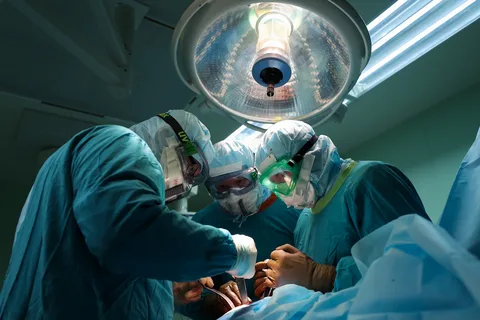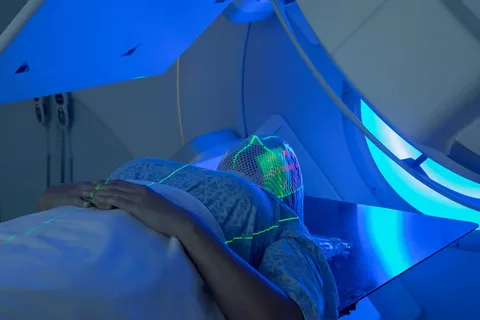Principles of treatment of malignant neoplasms
Machine translation
Original article is written in RU language (link to read it).
Treatment of malignant neoplasms is a difficult and often unsolvable problem. Today, specialists around the world are developing and implementing protocol systems for the effective treatment of malignant tumors. The essence of these protocol systems is that all specific diagnoses, taking into account their location and scale of damage, have a specific treatment regimen, including one treatment method or a combination of them, performed in strict sequence.
Find a lot of relevant and useful information on all sections of dentistry on our website .
The choice of treatment regimen is carried out at the planning stage, but is not changed further; doctors strictly adhere to the chosen protocol. Difficulties in treating patients with malignant tumors are associated with the biological characteristics and patterns of growth and development of these tumors.
Clinical characteristics of malignant neoplasms that are critical to the outcome of the disease:
infiltrating, autonomous, non-stop growth;
intensive spread by lymphogenous route;
rapid hematogenous metastasis.
Direct dissemination of cancer cells underlies the generalization of the process.

Figure 1. The tongue is a typical localization of the oncological process in the oral cavity.
The above factors determine the fundamental principles of antitumor therapy:
complete and thorough resection or destruction of the primary lesion;
preventing the progression of tumor growth, stopping the dissemination of tumor cells.
The patterns and features of the course of the oncological process are determined, in addition to the biological characteristics of the tumor, also by the general condition of the body, which suffers one way or another in patients with malignant neoplasms.
Things to consider when planning treatment for cancer:
The presence of concomitant pathology in the patient.
The addition of various complications associated with the development of a malignant process (disruption or absence of normal functioning of an organ affected by the pathological process, the development of anemia, intoxication).
Development of complications of concomitant diseases against the background of the tumor process.
Decreased immunity level.

Figure 2. Mandatory examination of the oral mucosa at a dentist’s appointment.
Choice of treatment tactics
To make the right choice of treatment tactics, it is necessary to collect the most complete information about the key signs of the tumor:
topography of the primary lesion, its boundaries relative to the organs;
type of tumor growth: endophytic, exophytic, mixed;
morphological characteristics (degree of differentiation, histological identity);
stage of the disease (depth of the lesion and size of the pathological focus, localization of relatively healthy organs, condition of the lymph nodes);
the condition of the patient's body.
Classification of treatment depending on the goal:
radical;
palliative;
symptomatic.
Radical treatment involves the complete elimination of the pathological focus. It is important to take into account the fact that the concept of radicalism in oncological practice has a relative meaning, since it is impossible to accurately determine the boundaries of the malignant process. There is no research method that would make it possible to verify the absence of “hidden” dissemination of the tumor.
Palliative treatment is a type of treatment when curing the disease is obviously impossible due to various reasons, most often associated with the spread of the tumor.
Symptomatic therapy does not imply obtaining an antitumor result; it is concentrated on eliminating or weakening symptoms, alleviating the patient’s condition, and preventing complications.
Methods of radical and palliative therapy are aimed at directly affecting tumor cells; they can all be divided into the following groups:
local-regional action: surgical treatment, radiological treatment, perfusion of chemotherapy drugs;
general type of action: hormone therapy, systemic chemotherapy;
antitumor auxiliary action: immunotherapy, radiomodifying factors (hyperoxygenation, hyperglycemia, hyperthermia).
Radiomodifying factors are a set of effects that enhance the effectiveness of the antitumor effect of other treatment methods. The use of oxygenation, local and general hyperthermia, oxidation of the tumor by saturating the bloodstream with large doses of glucose increases the necrobiotic effect of radiation therapy and chemotherapeutic solutions on tumor tissue.

Figure 3. Surgery.
Over the past decades, the use of several treatment methods at once in the treatment of malignant neoplasms, their simultaneous or sequential combination, has proven its effectiveness.
Combination treatment involves the use of two fundamentally different treatment methods (surgery and ionizing radiation; surgery and chemotherapy; ionizing radiation and chemotherapy).
Complex treatment involves combining all three treatment methods (surgical, radiological, chemotherapy).
Combination treatment involves a combination of two fundamentally similar, but differing in the mechanism of action techniques (the use of several chemotherapy drugs of different principles of action; a combination of external and interstitial irradiation).
Principles and algorithms of surgical treatment
During the treatment of malignant neoplasms, cancer patients may undergo surgical interventions of a diagnostic and therapeutic nature.
In turn, therapeutic interventions can be divided into the following types:
radical,
conditionally radical,
organ-preserving,
symptomatic,
combined,
palliative,
rehabilitation,
restorative,
plastic,
aesthetic.
A biopsy is a diagnostic surgical procedure; it is performed to clarify the diagnosis.
Traditional surgical treatment of malignant neoplasms includes:
Complete excision of the pathological focus within healthy tissue (removal of the entire affected organ or resection together with regional lymph nodes, vessels, fatty tissue), guided by the principles of zonation of metastasis and anatomical “case”.
Strict adherence to the excision line when separating the tumor from the organ. If there is an exophytic type of tumor growth, then up to 2 cm are retreated from the edge of the tumor; in the case of infiltrative type of tumor growth, the excision border is moved back by 5–6 cm.
Microscopic examination of a removed tumor - no tumor cells should be detected in the proximal and distal parts of the removed organ fragment with the primary focus.
Principles of application of ionizing radiation
Ionizing radiation is used for local impact on the area of malignant neoplasm, as well as the regional zone of metastasis. Patients with a tumor process in the head and neck area must undergo sanitation of the oral cavity before starting radiation therapy. If a patient requires tooth extraction, irradiation is not started until the hole has completely healed.

Figure 4. Administration of radiation therapy.
Radiation therapy for malignant neoplasms is based on the biological effects of ionizing radiation. The degree of morphological transformations in cells under the influence of ionizing radiation is determined by the level of their differentiation, the rate of metabolic processes, and mitotic activity. The radiosensitivity of cells is greater, the lower the degree of their differentiation.
Principles of chemotherapy treatment
The use of chemotherapeutic drugs is highly effective in the treatment of primary foci, relapses and metastases of malignant neoplasms. Chemotherapy is also effective in preventing the progression of latent (without clinical manifestations) tumor foci that persist after non-radical surgery.

Figure 5. A patient undergoing chemotherapy.
The use of chemotherapy drugs ensures selective targeted destruction of tumor cells. For this purpose, pharmacological drugs have been developed that have a cytotoxic or cytostatic effect; for this reason, chemotherapy drugs have a second name - cytostatics.
When treating malignant neoplasms of the head and neck, chemotherapy is not used as an independent treatment method; preference is given to an integrated approach.
If you are interested in this topic and want to get more information, pay attention to the section of our website : Maxillofacial surgery training .

